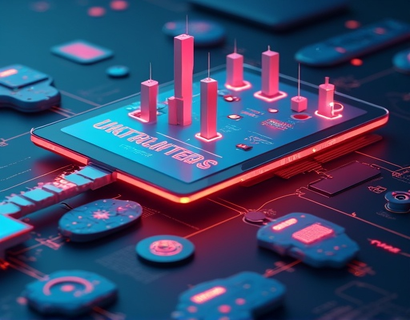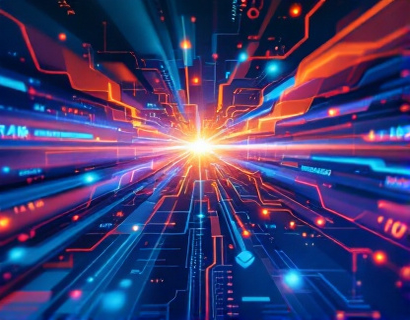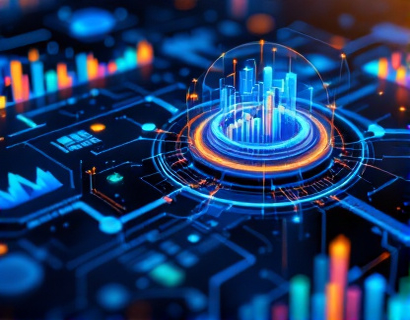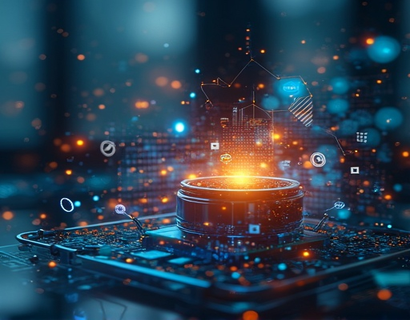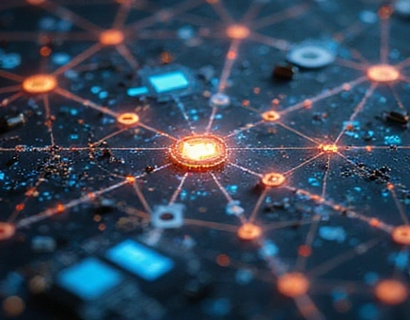Elevating Digital Engagement: The Synergy of AI and Crypto for Tech Pioneers
The intersection of artificial intelligence (AI) and cryptocurrency is redefining the digital landscape, offering unprecedented opportunities for early adopters and tech innovators. This article delves into the advanced integration of these technologies, focusing on how they can enhance security, efficiency, and innovation. By exploring the seamless fusion of AI and crypto, we aim to provide a comprehensive guide for those looking to maximize their online presence and thrive in the rapidly evolving digital world.
Understanding the Basics: AI and Cryptocurrency
Artificial intelligence, a branch of computer science, involves the development of algorithms and systems that can perform tasks requiring human intelligence, such as learning, reasoning, and self-correction. On the other hand, cryptocurrency is a digital or virtual currency that uses cryptography for security and operates on a decentralized network, typically a blockchain.
The integration of AI and cryptocurrency is not just a technological curiosity but a powerful combination that can drive significant advancements. AI can enhance the functionality and security of blockchain networks, while cryptocurrency can provide a robust and transparent medium for AI applications to operate.
Enhancing Security with AI and Crypto
One of the most compelling reasons to integrate AI and cryptocurrency is the significant boost in security. Blockchain technology inherently provides a high level of security through its decentralized and immutable nature. However, AI can further fortify this security by detecting and mitigating threats in real-time.
Machine learning algorithms can analyze patterns and identify anomalies in blockchain transactions, effectively preventing fraud and cyberattacks. For instance, AI-driven systems can monitor transaction data to spot suspicious activities, such as unusual transaction volumes or patterns that deviate from the norm. This proactive approach ensures that potential security breaches are addressed before they can cause harm.
Moreover, AI can enhance the security of private keys and wallet management. By using AI to generate and manage complex cryptographic keys, users can enjoy a higher level of security. AI can also assist in creating more secure and user-friendly wallet interfaces, reducing the risk of human error that can lead to security breaches.
Improving Efficiency through AI and Crypto
Efficiency is another area where the combination of AI and cryptocurrency shines. Blockchain networks, while secure, can be slow and resource-intensive, especially when processing a high volume of transactions. AI can optimize these processes, making blockchain more efficient and scalable.
Smart contracts, self-executing contracts with the terms directly written into code, can be enhanced with AI to automate and streamline various processes. AI can analyze data and conditions in real-time, ensuring that smart contracts execute only when all predefined criteria are met. This not only speeds up transactions but also reduces the need for intermediaries, lowering costs and increasing efficiency.
Additionally, AI can optimize the energy consumption of blockchain networks. By predicting and adjusting the computational resources required for mining and transaction validation, AI can help reduce the environmental impact and operational costs associated with blockchain technology.
Innovation Driven by AI and Crypto
The synergy of AI and cryptocurrency fosters a fertile ground for innovation. Developers and entrepreneurs can leverage these technologies to create novel applications and services that were previously unimaginable. For example, decentralized finance (DeFi) platforms use AI to offer sophisticated financial services, such as lending, borrowing, and trading, without traditional financial intermediaries.
AI can also enhance the user experience on blockchain-based platforms. Personalized recommendations, intelligent chatbots, and predictive analytics can make interactions more intuitive and efficient. For instance, an AI-powered chatbot can assist users in navigating complex blockchain applications, providing guidance and support in real-time.
Furthermore, the integration of AI and cryptocurrency can lead to the development of new economic models. Tokenized assets, for example, can be managed and traded more efficiently with the help of AI, enabling fractional ownership and broader access to investment opportunities.
Maximizing Online Presence with AI and Crypto
For early adopters and tech innovators, the combination of AI and cryptocurrency offers powerful tools to elevate their online presence. By leveraging these technologies, individuals and businesses can create a robust digital footprint that is secure, efficient, and innovative.
One way to maximize online presence is through decentralized social media platforms powered by blockchain and AI. These platforms can offer greater privacy and control over personal data, as well as more engaging and authentic interactions. AI can curate content and recommend connections based on user preferences and behavior, enhancing the overall user experience.
Cryptocurrency can also serve as a medium for rewarding engagement and loyalty. By issuing utility tokens that represent value within a specific ecosystem, platforms can incentivize users to participate actively. For example, a content creation platform could issue tokens to users who contribute high-quality content, fostering a community-driven environment.
Building a Decentralized Identity
Another significant application of AI and cryptocurrency is in the creation of decentralized identities. Traditional online identities are often centralized and vulnerable to breaches and misuse. A decentralized identity, managed through blockchain and enhanced by AI, can provide users with full control over their personal data.
AI can help in managing and verifying digital identities, ensuring that only authorized individuals access sensitive information. Blockchain ensures that this data is immutable and transparent, reducing the risk of fraud and identity theft. This approach not only enhances security but also empowers users by giving them ownership of their digital identities.
Challenges and Considerations
While the integration of AI and cryptocurrency offers numerous benefits, it is essential to acknowledge the challenges and considerations involved. One of the primary challenges is the regulatory landscape. Both AI and cryptocurrency are still evolving, and regulations vary widely across different jurisdictions. Staying compliant and navigating these regulations is crucial for any application or service that leverages these technologies.
Another consideration is the technical complexity. Integrating AI and cryptocurrency requires a deep understanding of both fields. Developers and businesses must invest in skilled personnel and robust infrastructure to ensure successful implementation. Additionally, the interoperability of different blockchain networks and AI systems can be a hurdle, necessitating standardization and collaboration within the tech community.
Future Prospects: The Road Ahead
The future of AI and cryptocurrency integration is promising, with ongoing advancements likely to unlock even more possibilities. As AI algorithms become more sophisticated, their ability to enhance blockchain security, efficiency, and innovation will continue to grow. Similarly, the maturation of blockchain technology will provide a more stable and scalable foundation for AI applications.
One exciting area to watch is the development of AI-driven blockchain analytics. These tools can provide deeper insights into blockchain activity, helping businesses and regulators make informed decisions. Additionally, the rise of Web3, a decentralized internet powered by blockchain, AI, and other emerging technologies, holds the potential to revolutionize how we interact online.
For early adopters and tech innovators, staying at the forefront of these developments is key. By embracing the synergy of AI and cryptocurrency, they can position themselves as leaders in the next generation of digital technologies, reaping the benefits of enhanced security, efficiency, and innovation.





